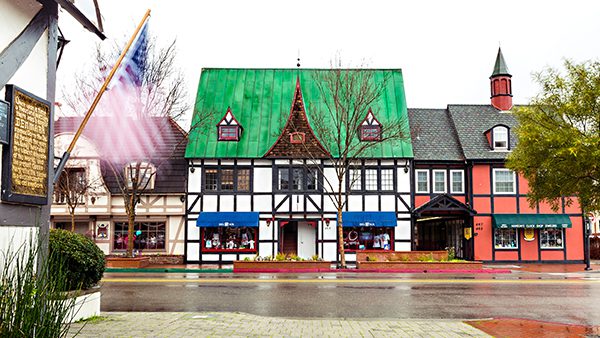Good news for travel and tourism marketers: You don’t need Big Ben, Gaudí or massive tulip fields to win hearts and bookings. Travelers still crave adventure, but today’s trips are shaped by tight budgets and a desire to escape the crowds. With a little creativity and a sharp eye for “destination dupe” potential, marketers can tap into a growing trend that blends value with discovery.
What Is a Destination Dupe?
In the fashion and beauty industries, a “dupe” (short for duplicate) is stylish, affordable and surprisingly similar to a higher-end option. In travel and tourism, a dupe is a lower-profile locale that serves up the same cultural flavor, scenic appeal or architectural charm as famous hotspots, minus the high price tag and overcrowding.

As Melanie Fish, Chief Trend Tracker at Expedia Brands, puts it, “Dupes are like cheaper versions of luxury brands… a little unexpected, sometimes more affordable, but every bit as delightful.”
Some notable examples of dupes in the travel and tourism industry are Liverpool for London, Curaçao for Amsterdam, Girona for Barcelona and Pattaya for Phuket.
Navigating a Price-Conscious Travel Landscape
A few factors are playing into the popularity of destination dupes. First things first, wanderlust is here to stay. Global air passenger traffic hit 95% of pre-pandemic levels in 2023, according to the International Air Transport Association. But inflation and overtourism have changed the equation. Cities like Venice, Edinburgh and Barcelona are raising tourism taxes. And Forbes recently projected a one-week trip within the U.S. for a family of four would cost around $4,500. That’s not exactly budget friendly. So what’s a traveler to do? Cue the dupes.

As reported by Travel + Leisure, 93% of travelers would consider a dupe destination, with 64% saying cost savings were the deciding factor.
What Travel Marketers Should Do Next
Here’s how to stand out as a destination dupe.
- Audit your destination for dupe potential: Look at your architecture, food, scenery and vibe. Are you Copenhagen-adjacent in feel, Tuscany-like in terrain or offering Bali-style bliss without the 20-hour flight? Find your niche and lean into it.
- Partner with influencers to drive discovery: Influencers are driving demand for destinations that weren’t even on the map a year ago. A Forbes Advisor article revealed Gen Z is using Google 25% less than Gen X. That means TikTok and Instagram now rank higher than search engines in the travel decision chain—making now the perfect time to start using content creators to tell your story authentically.
- Speak to value seekers: Craft messaging that pairs affordability with uniqueness. You’re not the cheap version of somewhere else, you’re a unique and clever choice.
- Keep sustainability top of mind: Smaller cities, second-tier destinations and under-the-radar gems are more wallet-friendly and often more eco-friendly. That’s especially important to travelers prioritizing feel-good trips driven by sustainable practices.
Booking.com’s 2024 Sustainable Travel Report shows that:
- 75% of global travelers want to travel more sustainably.
- 54% aim to use greener transportation.
- 57% want to reduce energy consumption on the road.
Destination Spotlight: A Domestic Dupe for Denmark
Let’s take a closer look at Solvang, California, now known as the “Danish Capital of America.” By leaning into existing assets, marketers promoted this destination for exactly what it is: a charming, Danish-style village nestled in California wine country.
Here’s how Solvang owns its identity:
- Cultural events: Danish Days in September feature folk dancing, parades and storytelling; Julefest November through January is filled with Scandinavian-style holiday magic; and April’s Solvang Brick Build is a LEGO-inspired Danish design celebration.
- Culinary highlights and local flavor: It’s not hard to find Danish delicacies like kringles or æbleskiver, and the area boasts Michelin-rated restaurants as well as the Taste of the Santa Ynez Valley regional wine and food showcase.
- Marketing tactics: With a social media presence spotlighting Danish aesthetics, campaigns focused on Gen Z and Millennial travelers seeking “Europe without the jetlag,” and storytelling with the Elverhøj Museum celebrating cultural roots, Solvang proves that owning your dupe identity isn’t a compromise—it’s a competitive edge.
Creative Strategies to Chart Your Course
If your destination checks the dupe boxes but you’re not marketing it that way, you’re leaving bookings on the table. At Marriner, we help travel brands stay ahead of the trends that move the needle. Let’s work together to tell your story, capture your value and get you discovered before the rest of the world catches on.
Sources:
Why ‘Destination Dupes’ Are the Latest Travel-Twinning Trend. BBC, March 2024.
Global Air Travel Demand Continued Its Bounce Back in 2023. IATA, January 2024.
Why Staying Local Might Be The Best Way To Travel. Forbes, May 2025.
These ‘Dupe Destinations’ Will Get You to Europe for Half the Price of a Flight to London or Paris. Travel + Leisure, July 2023.
Booking.com Sustainable Travel Report 2024. GSTC, July 2024.

